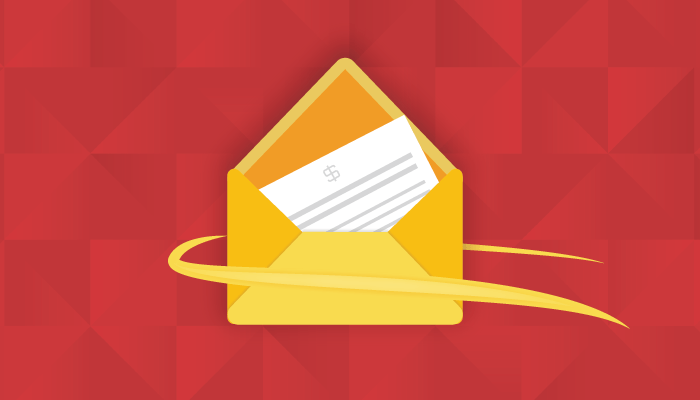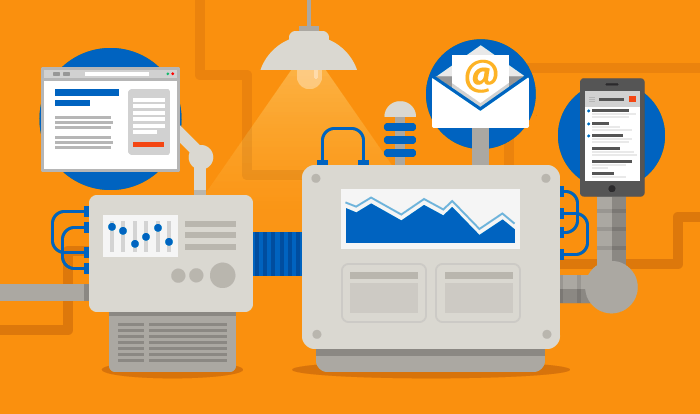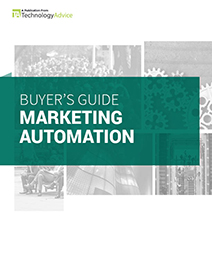The demand for marketing automation software is on the rise. According to Technavio analysts, the global marketing automation software market is expected to grow at a compound annual growth rate (CAGR) of over nine percent from 2015-2019.
This increase in popularity has brought a cloud of confusion with it.
Many businesses are under the impression that “marketing automation” is just vendor speak for “email marketing”. The two are not interchangeable though, which means buyers often end up comparing systems designed for different jobs.
To avoid barking up the wrong tree, it’s important to learn the difference between email marketing and marketing automation — and when to opt for one over the other.
Email Marketing

If you’re like most marketers, then you already love email marketing. It’s a proven way to build trust with prospects, enhance relationships with current customers, and encourage loyalty.
One of the biggest benefits of email marketing is that it moves business conversations to a more personal environment: the customer’s inbox. Additionally, email marketing typically costs less than direct mail, print advertising, or trade shows. The estimated return on investment for email marketing is between 2,500–4,300 percent.
But email marketing presents unique challenges as well.
Since each contact generally receives the same content — a newsletter, a thank you or follow-up email, or even an introductory auto-responder series — it’s difficult to send personalized communications. As your audience grows, you rely on static campaigns and separate lists, rather than one database of contacts that can be segmented and sorted into multiple campaigns. Your customers aren’t all the same, but email marketing often treats them as if they were.
Another challenge is the ability to directly attribute revenue to your email marketing efforts. Of course, most vendors provide metrics such as open and click through rates, but these data points don’t always connect to revenue or show if your campaigns are increasing sales long-term.
Marketing Automation

If you’ve ever tried to compare marketing automation software, you’ve likely found vendors proclaiming the technology is a “game changer” that will take your marketing “to the next level.”
What’s harder to find is a clear, unbiased explanation of what that looks like.
The confusion around marketing automation and email marketing stems from the fact that they are both rooted in email. Though both use email as the primary means of communication, it’s easiest to think of email marketing as the starting point that marketing automation builds from.
Full marketing automation systems go beyond the inbox to let you nurture leads and automate campaigns. In addition to email marketing, a good marketing automation system provides the following capabilities:
- Landing page development
- Website visitor tracking
- Lead management (capture, score, and nurture)
- A centralized marketing database
- Native CRM integration
- Data analysis and reporting
And those are just the basics. Many vendors outshine the competition by providing additional tools such as:
- Dynamic website content generation
- Multichannel campaign management
- Mobile/responsive design
- ROI and revenue reporting
- Built-in ISV integration
As you can see, marketing automation platforms are powerful and complex. But how exactly does this power help you level up?
Marketing automation tools help you identify which stage of the buying process your prospect are in, and then guide them to the next stage — until they eventually convert into a customer.
For example, instead of a marketing campaign with a single email, you can design campaigns that weave your buyer’s needs into a series of emails. This means you can send an initial email to a segment of your list. Then, if a prospect takes a specified action — downloads a white paper, reads a blog post, or views your pricing page — it will trigger an email. A totally different email than the one that’s sent to prospects who didn’t take action.
Beyond click through rate, you can also track a prospect’s activity outside the inbox. This includes their behavior on your website, social media, and other aspects of their digital footprint. In turn, this gives you more insight into their needs and preferences.
In traditional email marketing, there’s not much you can do if your customer isn’t ready to buy immediately. But with marketing automation, you can continually engage prospects and identify signs that indicate they are ready to purchase. When those behaviors are detected, the system can alert your sales team to reach out.
The ability to track and nurture customers through the entire buying process allows you to determine the exact impact each campaign has. If you discover 75 percent of prospects convert after taking a certain series of actions — like watching a video or reading a blog post — then it’s important to scale and replicate that process. Using marketing automation data, you can track what works, replicate it, and use analytics to measure and validate the success of your marketing efforts.
Should you make the switch?
Now that you know the difference between email marketing and marketing automation, it’s time to determine which tool is best for your business. Let’s examine some important considerations aside from system functionality that can help you decide which is right for you.
Pricing
Cost is perhaps the first difference you’ll notice between the two systems. Email marketing providers generally price based on mailing list size or the number of emails sent. These plans often offer a free tier for basic service, and then scale upwards starting at around $20 per month.
Marketing automation pricing is as varied as the systems. It’s a larger investment than email marketing, and the cost can change based on additional features and the integrations your business needs. You can expect to pay $200 per month on the low end, but many marketing automation systems cost upwards of $2,500.
If you’ve outgrown your email marketing but aren’t ready to graduate to marketing automation quite yet, don’t worry – you’re not alone. Many vendors are popping up to address such gaps in the market. Niche players like Boingnet and Drip offer “lightweight marketing automation,” while vendors such as Infusionsoft combine CRM, email marketing, lead-capture, and ecommerce for small or growing businesses.
Complexity
Buyers used to rely exclusively on salespeople to help them through a complex purchase. Nowadays, people considering a large investment in a product or service don’t make an immediate decision, or necessarily contact a vendor. They take the time to research, self-educate, and compare on their own.
In other words, the sales process has become the buyer’s journey.
And it could take days. Or weeks. Even months.
In a lot of ways, this change is one of the reasons marketing automation solutions have become so useful. The ability to help unique prospects through a complex process (such as choosing a new MA program) is why marketing automation is predominantly used by B2B companies. 53 percent of B2B Fortune 500 companies use marketing automation technology, which is around 5X the adoption rate of companies overall.
B2C marketers can still benefit from B2B tactics, but keep in mind the focus of the system is generally different:
Analytics and Intelligence
Marketing automation goes beyond tracking prospects and customers – it takes action.
Let’s say two prospects receive the same email. One clicks through and watches a product video and then views your pricing page, the other reads an introductory blog post. These two prospects are now at different points in their journey. Marketing automation software automatically ensures they receive a different series of emails to fit their unique needs.
Email marketing would lose track of the prospect’s actions after they clicked through, and also fail to tailor communications to each prospect — they would both simply receive the same second email. Relevant communications help move prospects along their journey, and ensure they talk to a sales representative at the appropriate time.
If your email system can’t track prospects through multiple channels and deliver the level of behavioral targeting you need, it’s time for marketing automation.
Marketing Automation Vs. Email Marketing
As you can see, there are major differences between the two systems.
So which wins the battle of marketing automation vs. email marketing?
Well, it depends.
Neither one is inherently better. The deciding factor is what your business needs. The great deal of functional parity between systems means you have to identify the one that enables you to successfully achieve your goals. You don’t want to be stuck with a system that doesn’t fit your marketing strategy, nor one that is so powerful you can’t benefit from its capabilities.
When used properly, both technologies provide a direct line of communication with your audience. Do you simply want to email your contacts, or do you need to go beyond the inbox?

